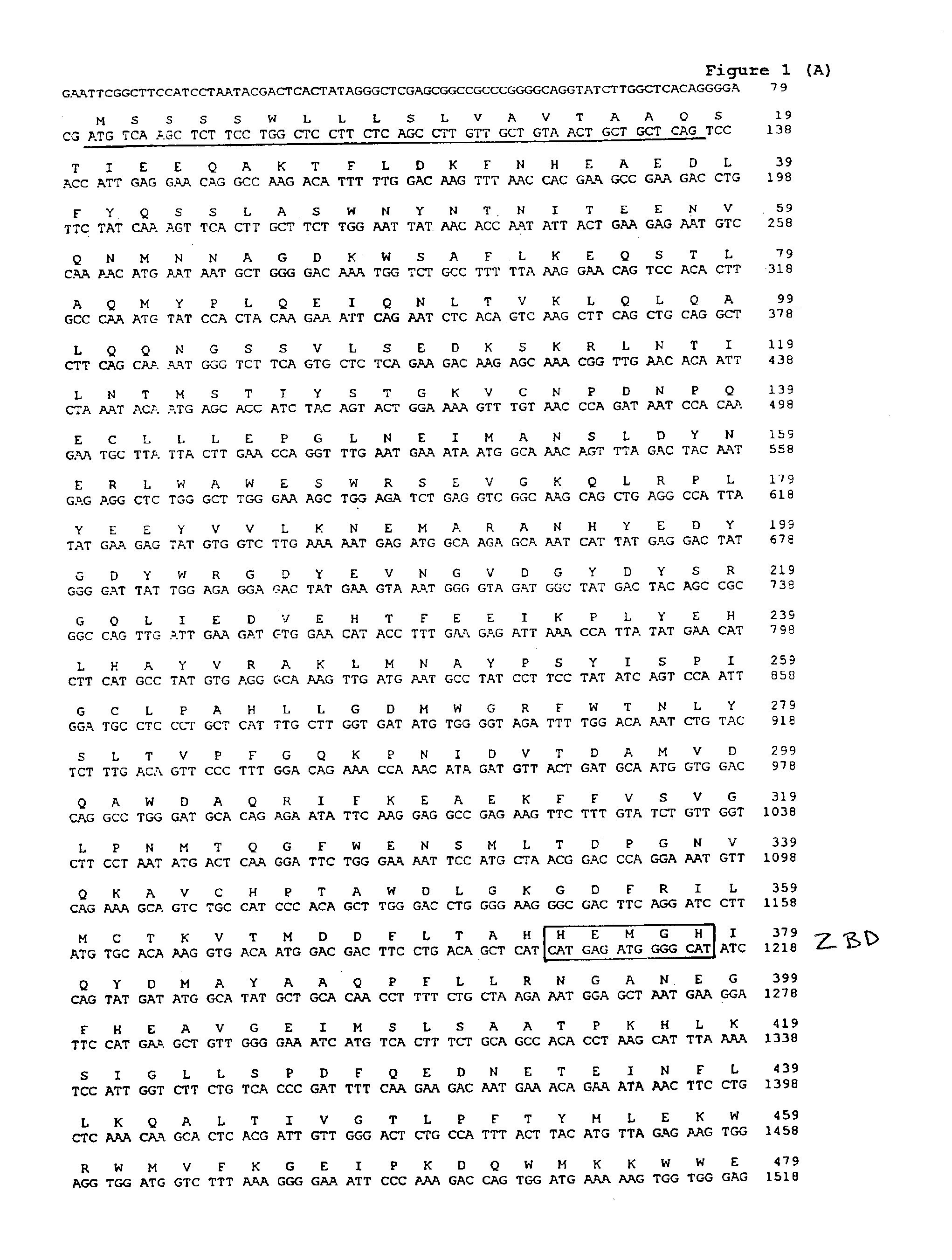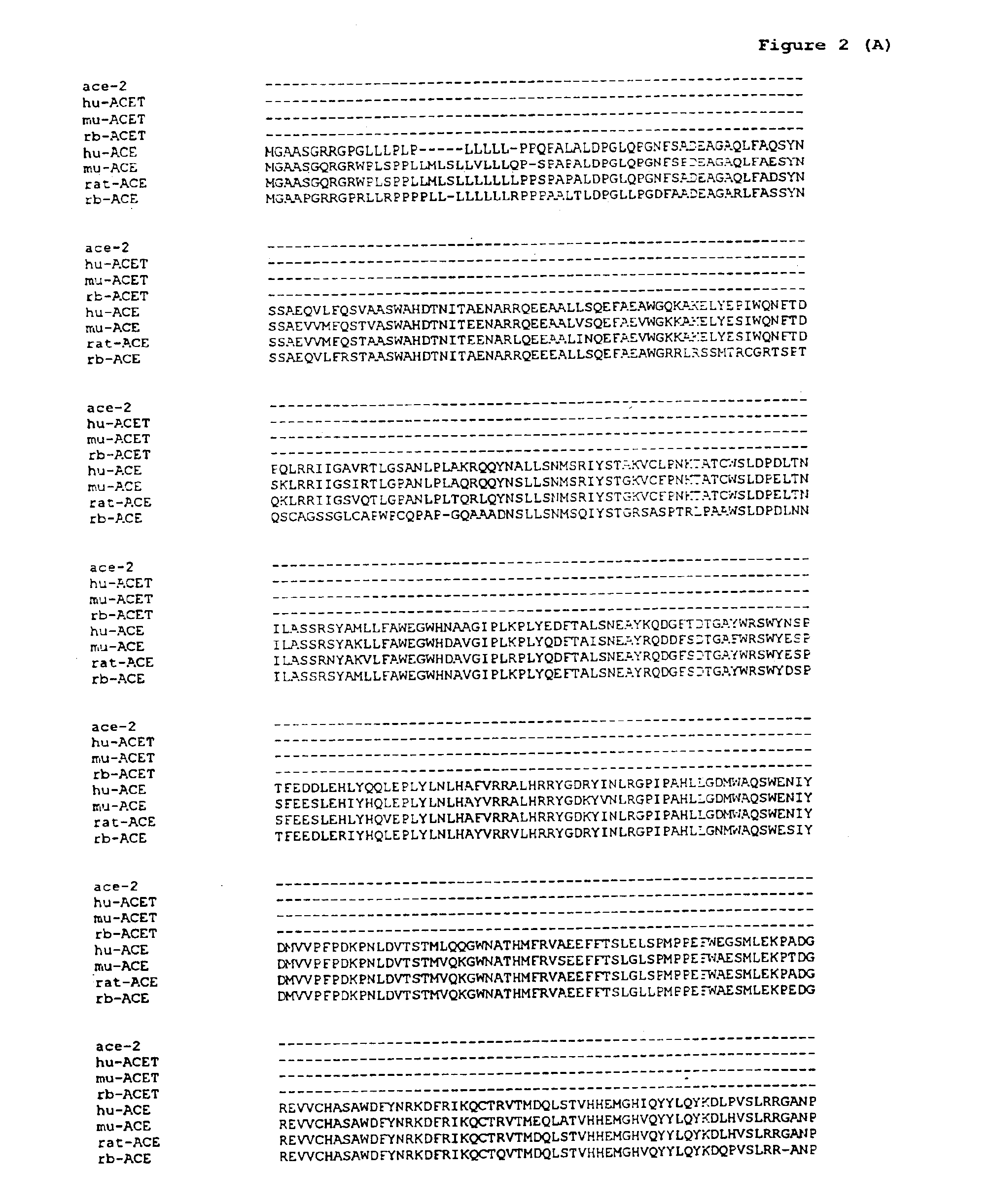Angiotensin converting enzyme homolog and therapeutic and diagnostic uses therefor
an angiotensin and converting enzyme technology, applied in the field of angiotensin, can solve the problems of inability to provide sufficient cardiac output, inability to treat hypertensive patients, and increased risk of myocardial infarction, so as to achieve the highest clinical benefit, accelerate and less costly development, and determine the appropriate dosage
- Summary
- Abstract
- Description
- Claims
- Application Information
AI Technical Summary
Benefits of technology
Problems solved by technology
Method used
Image
Examples
Embodiment Construction
4.1. General
[0046]The invention is based at least in part on the discovery of a gene encoding a protein having regions which are significantly homologous to regions of known angiotensin converting enzymes (ACEs). Thus, the genes and proteins disclosed herein are referred to as Angiotensin Converting Enzyme 2 (ACE-2) genes and proteins. The sequence of the full length cDNA encoding ACE-2 was determined from a clone obtained from a cDNA library prepared from mRNA of a human heart of a subject who had congestive heart failure. The cDNA encoding the full length human ACE-2 protein and comprising 5′ and 3′ untranslated regions is 3396 nucleotides long and has the nucleotide sequence shown in FIG. 1 and is set forth as SEQ ID NO: 1. The full length human ACE-2 protein is 805 amino acids long and has the amino acid sequence shown in FIG. 1 and set forth in SEQ ID NO: 2. The coding portion (open reading frame) of SEQ ID NO: 1 is set forth as SEQ ID NO: 3 and corresponds to nucleotides 82 to...
PUM
 Login to View More
Login to View More Abstract
Description
Claims
Application Information
 Login to View More
Login to View More - R&D
- Intellectual Property
- Life Sciences
- Materials
- Tech Scout
- Unparalleled Data Quality
- Higher Quality Content
- 60% Fewer Hallucinations
Browse by: Latest US Patents, China's latest patents, Technical Efficacy Thesaurus, Application Domain, Technology Topic, Popular Technical Reports.
© 2025 PatSnap. All rights reserved.Legal|Privacy policy|Modern Slavery Act Transparency Statement|Sitemap|About US| Contact US: help@patsnap.com



